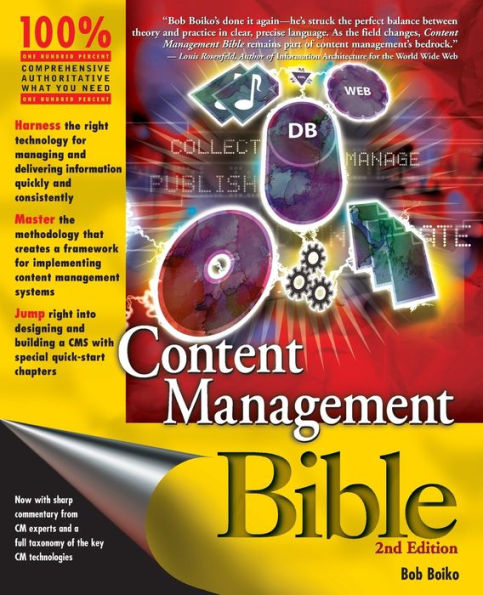Table of Contents
Foreword.
Preface.
Acknowledgments.
Introduction.
Part I: What Is Content?
Chapter 1: Defining Data, Information, and Content.
Chapter 2: Content Has Format.
Chapter 3: Content Has Structure.
Chapter 4: Functionality Is Content, Too!
Chapter 5: But What Is Content Really?
Part II: What Is Content Management?
Chapter 6: Understanding Content Management.
Chapter 7: Introducing the Major Parts of a CMS.
Chapter 8: Knowing When You Need a CMS.
Chapter 9: Component Management versus Composition Management.
Chapter 10: The Roots of Content Management.
Chapter 11: The Branches of Content Management.
Part III: Doing Content Management Projects.
Chapter 12: Doing CM Projects Simply.
Chapter 13: Staffing a CMS.
Chapter 14: Working within the Organization.
Chapter 15: Getting Ready for a CMS.
Chapter 16: Securing a Project Mandate.
Chapter 17: Doing Requirements Gathering.
Chapter 18: Doing Logical Design.
Chapter 19: Selecting Hardware and Software.
Chapter 20: Implementing the System.
Chapter 21: Rolling Out the System.
Part IV: Designing a CMS.
Chapter 22: Designing a CMS Simply.
Chapter 23: The Wheel of Content Management.
Chapter 24: Working with Metadata.
Chapter 25: Cataloging Audiences.
Chapter 26: Designing Publications.
Chapter 27: Designing Content Types.
Chapter 28: Accounting for Authors.
Chapter 29: Accounting for Acquisition Sources.
Chapter 30: Designing Content Access Structures.
Chapter 31: Designing Templates.
Chapter 32: Designing Personalization.
Chapter 33: Designing Workflow and Staffing Models.
Part V: Building a CMS.
Chapter 34: Building a CMS Simply.
Chapter 35: What Are Content Markup Languages?
Chapter 36: XML and Content Management.
Chapter 37: Processing Content.
Chapter 38: Building Collection Systems.
Chapter 39: Building Management Systems.
Chapter 40: Building Publishing Systems.
Appendix: Epilogue.
Index.




